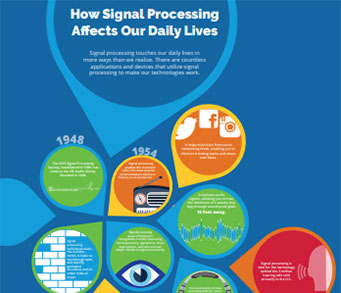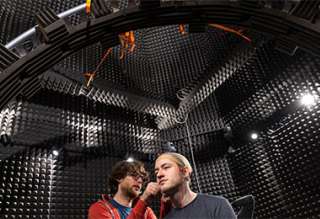SPS Feed
Top Reasons to Join SPS Today!
1. IEEE Signal Processing Magazine
2. Signal Processing Digital Library*
3. Inside Signal Processing Newsletter
4. SPS Resource Center
5. Career advancement & recognition
6. Discounts on conferences and publications
7. Professional networking
8. Communities for students, young professionals, and women
9. Volunteer opportunities
10. Coming soon! PDH/CEU credits
Click here to learn more.
The Latest News, Articles, and Events in Signal Processing
Obstructive sleep apnea (OSA) is a sleep disorder in which pharyngeal collapse during sleep causes complete (apnea) or partial (hypopnea) airway obstruction. OSA is common and can have severe implications, but often remains undiagnosed. The most widely used objective measure of OSA severity is the number of obstructive events per hour of sleep, known as the apnea-hypopnea index (AHI).
Obstructive Sleep Apnea (OSA) is a sleep breathing disorder affecting at least 3–7% of male adults and 2–5% of female adults between 30 and 70 years. It causes recurrent partial or total obstruction episodes at the level of the pharynx which causes cessation of breath during sleep.
Approximately one-fifth of the world's population suffer or have suffered from voice and speech production disorders due to diseases or some other dysfunction. Thus, there is a clear need for objective ways to evaluate the quality of voice and speech as well as its link to vocal fold activity, to evaluate the complex interaction between the larynx and voluntary movements of the articulators (i.e., lips, teeth, tongue, velum, jaw, etc), or to evaluate disfluencies at the language level.
Manuscript Due: October 31, 2020
Publication Date: December 2021
CFP Document
December 6-9, 2020
NOTE: Location changed to--Virtual Conference

The Quantum Information and Inference group led by Jan Kolodynski at the Centre of New Technologies (CeNT) of the University of Warsaw offers a 2(+1)-year postdoctoral position within the project Continuously Monitored Quantum Sensors: Smart Tools and Appl
Pages
SPS Social Media
- IEEE SPS Facebook Page https://www.facebook.com/ieeeSPS
- IEEE SPS X Page https://x.com/IEEEsps
- IEEE SPS Instagram Page https://www.instagram.com/ieeesps/?hl=en
- IEEE SPS LinkedIn Page https://www.linkedin.com/company/ieeesps/
- IEEE SPS YouTube Channel https://www.youtube.com/ieeeSPS























